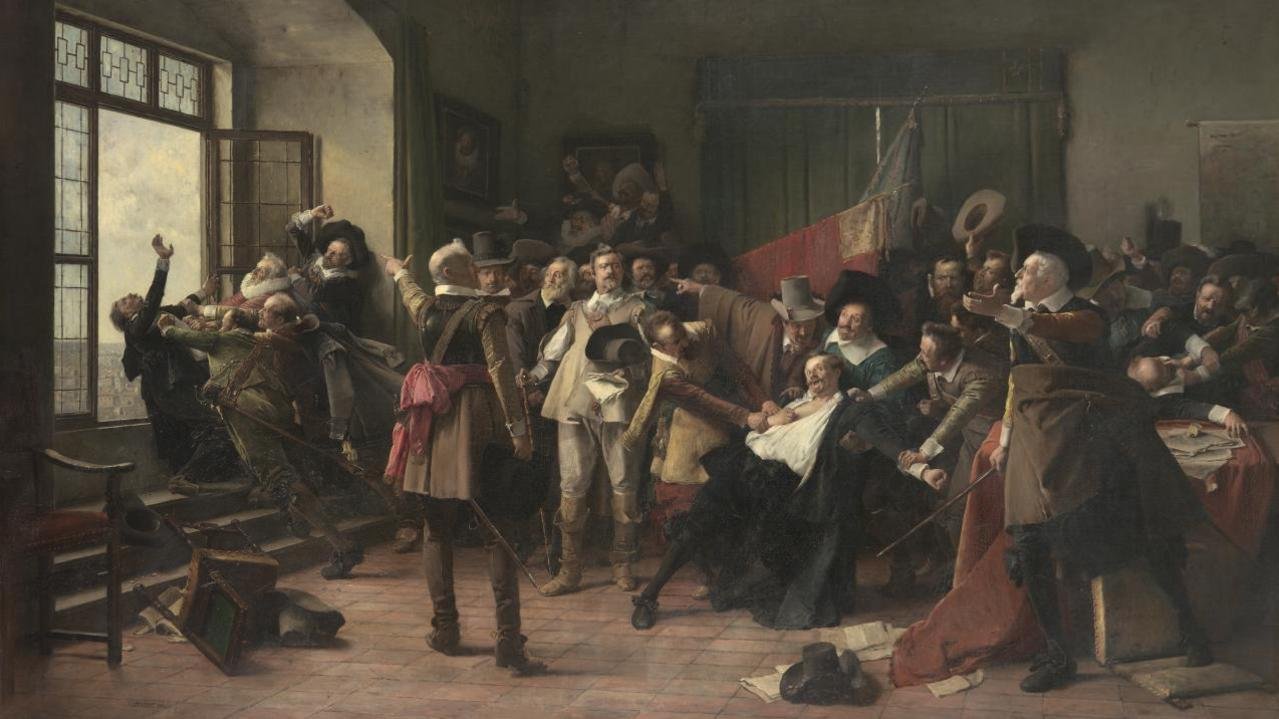Before: The Thirty Years' War
/From May 1618 to October 1648, one of the longest and most destructive conflicts in European history raged on. It’s estimated that between 4.5 and 8 million people died during the Thirty Year’s War. The war was a mix of civil disputes within the Holy Roman Empire, religious disagreements between Protestants and Catholics, and power struggles among European nations. Let us ask ourselves, what led to this war? What happened before the Thirty Years’ War?
Religious Tensions
Marthin Luther (Source)
Nearly 100 years before this conflict, the actions of the Catholic church led to growing concerns about the authority of the Pope. Marthin Luther’s 95 Theses criticized the selling of indulgences and sparked wide protest against Church doctrine. This would soon grow into the Protestant Reformation.
The Holy Roman Empire quickly became a mosaic of Catholic and Protestant territories. This invariably led to tensions as neighbours might find themselves with different religions. Rulers might decide to adopt the new faith whilst their populace didn’t, or vice-versa.
The Peace of Augsburg (1555) tried to address the growing issues with the formalization of this principle: Cuius regio, eius religio. Whose realm, his religion. This recognized the rights of rulers to be either Catholic or Lutheran, and to impose their religion on their realm.
Unfortunately, other groups like Calvinists and Anabaptists were excluded. The popularity of Calvinism grew in the Netherlands and in other northern states, leading to renewed tensions.
Politics and Dynasties
Cardinal Richelieu (Source)
The conflict was also a major opportunity for other European nations. At the time, the Habsburg dynasty ruled as kings of Austria and Spain. They were the most powerful political entity in Europe. That meant everyone else had a bone to pick with them.
The Bourbon dynasty of France considered the Habsburgs their greatest rival. The chief minister of King Louis XIII, Cardinal Richelieu, advised prioritizing state interests over religious matters. So, despite being a Catholic power, France supported Protestant forces in the Empire to weaken their rival.
The Dutch and the low countries were subjects of Spain, and discontent with their situation. Their revolt started in 1568 and served as an example of a small protestant state asserting its authority over a much larger catholic master. This war would become intertwined with the Thirty Year’s War.
Once everything was started, Denmark and Sweden saw their own opportunities to fight against the Habsburgs, adding fuel to the fire.
Society and the Empire
The Holy Roman was a complex entity. It was made up of hundreds of semi-autonomous duchies, principalities, free cities, and bishoprics. Compared to states like France and Spain, the emperor’s power was severely limited.
All of these little states would often bicker and fight one another for local power. And religion also became a tool in that struggle; some lords would adopt Protestantism simply as a means to assert themselves over their neighbours or the emperor.
This period was also rife with popular discontent and economic hardship. Economies were moving away from Central Europe because of the advent of colonialism. The Reformation also empowered local identities and loyalties, often leading to fiction between communities and their rulers.
The Defenestration of Prague (Source)
Declaration of War
Ultimately, an immediate spark for the war would happen. In 1618, two representatives of the Catholic Ferdinand II would be defenestrated out of Prague Castle by Protestant Bohemian nobles. The Thirty Years’ War had a lasting impact on Europe, and not just because of the death toll. The Peace of Westphalia in October 1648 granted regions of Alsace to France, regions which would be contested by the German Empire in World War I nearly 300 years later.
Hi, I’m David, and I write principaly Fantasy and Science-Fiction. I’ve been crafting fictional worlds for fifteen years, which is what interested me in studying history in the first place. I believe history is a great tool, not only to learn about our world directly, but to craft better universes. The lead-up to wars is often just as interesting as the wars itself, and the leaders stand out just as much as the notable events.






